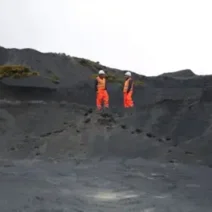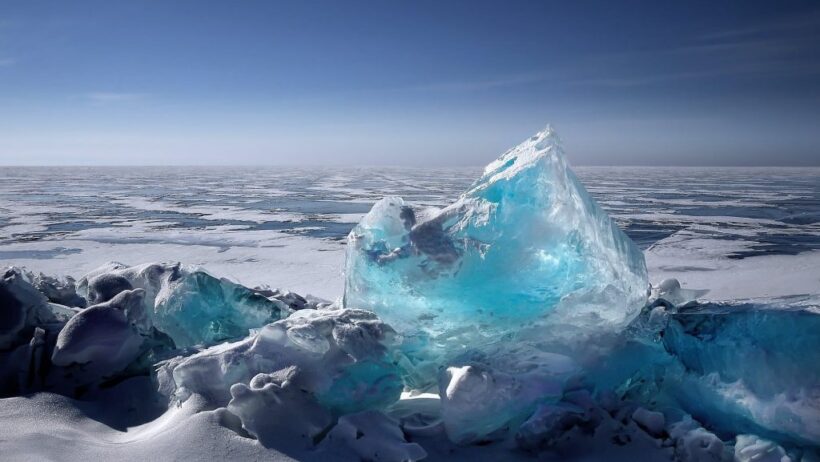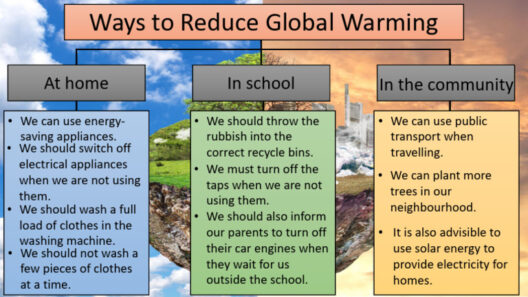Global warming, a widely discussed phenomenon, has numerous ramifications for our planet, particularly concerning the rise in sea levels. The intricate relationship between elevated global temperatures and sea level changes is multifaceted and necessitates a comprehensive exploration. Understanding how global warming can lead to rising sea levels is crucial for implementing effective climate action and developing adaptive strategies.
At the fundamental level, global warming is primarily driven by the greenhouse effect, wherein gases such as carbon dioxide and methane trap heat within the Earth’s atmosphere. This cumulative warming effect instigates numerous changes across ecosystems, notably in polar and glacial regions. One significant consequence of increasing temperatures is the thermal expansion of seawater, a critical factor contributing to rising sea levels. As ocean water warms, it occupies more space, leading to a discernible increase in ocean volume. This phenomenon, while seemingly gradual, can culminate in substantial changes over decades.
Moreover, the melting of glaciers and ice sheets is a significant contributor to rising sea levels. Glaciers, which are large masses of ice formed over centuries, hold vast amounts of freshwater. Elevated temperatures expedite the melting process of these glaciers, particularly those in Greenland and Antarctica. As these glaciers diminish, they release freshwater into the oceans, further exacerbating sea level rise. Notably, the West Antarctic Ice Sheet is particularly vulnerable and shows signs of rapid melting, raising alarms among scientists about its potential impact on global sea levels.
In addition to these factors, the melting of the Greenland Ice Sheet plays a crucial role. Covering an expanse larger than the state of Mexico, this vast ice mass contains enough water to increase sea levels by approximately seven meters, should it completely disintegrate. Even partial melting has immediate consequences, as this freshwater influx dilutes seawater, affecting oceanic currents and ecosystems and driving further changes in climate patterns. The interplay of these factors illustrates the intricate web of interactions between global warming and sea level rise.
Another critical aspect is the contribution of permafrost. As global temperatures rise, regions previously locked in ice are experiencing thawing. This thawing not only releases previously trapped freshwater into the oceans but also introduces greenhouse gases like methane into the atmosphere, further intensifying the greenhouse effect and catalyzing more significant warming. This cycle creates a feedback loop, complicating efforts to mitigate climate change.
In examining the direct consequences of rising sea levels, the ramifications are profound and far-reaching. Coastal areas are among the most vulnerable to sea-level rise. Low-lying regions, where a significant portion of the world’s population resides, face threats such as increased flooding, erosion, and saltwater intrusion into freshwater supplies. Major cities like Miami, New Orleans, and Jakarta are already experiencing the adverse effects of rising waters. Inundation events are expected to become more frequent and severe, disrupting communities and leading to displacement.
Additionally, significant ecological implications arise from rising sea levels. Coastal ecosystems, such as mangroves and wetlands, serve vital functions in biodiversity preservation, carbon sequestration, and storm protection. As sea levels rise, these habitats are at risk of submergence, thereby diminishing their ability to provide essential services and support wildlife. Not only do these changes threaten biodiversity, but they also exacerbate the loss of natural barriers that protect coastal populations from storms and flooding.
To mitigate these challenges, it is imperative to prioritize climate action at both local and global levels. Reducing greenhouse gas emissions is paramount to curbing global temperatures. Transitioning to renewable energy sources, implementing energy-efficient practices, and enhancing carbon capture technologies are vital strategies that can significantly reduce the pace of climate change. International cooperation and commitment, as seen in frameworks such as the Paris Agreement, are essential for coordinating efforts to combat climate change collectively.
Adaptation strategies also play a critical role. Communities must assess their vulnerabilities and develop comprehensive plans to address the potential impacts of rising sea levels. Investing in resilient infrastructure, such as seawalls and flood barriers, can protect coastal areas from inundation. Additionally, restoring and conserving natural habitats like wetlands and mangroves can enhance the resilience of coastal regions, allowing them to absorb storm surges and mitigate flooding.
Lastly, public awareness and education are crucial in building a populace that is informed about the implications of global warming and rising sea levels. Individuals and communities should be equipped with knowledge about sustainable practices and encouraged to engage in advocacy for policies that address climate change. Grassroots movements and local initiatives can amplify voices and catalyze change in policy-making.
In conclusion, understanding how global warming can cause sea levels to rise is pivotal for both immediate and long-term societal and ecological health. The effects of thermal expansion, the melting of glaciers and ice sheets, and the thawing of permafrost all contribute to this ongoing crisis. The consequences are dire, with coastal areas facing increased flooding, erosion, and ecological decline. Through concerted global efforts in mitigation and adaptation, it is possible to confront the challenges posed by rising sea levels and protect our planet for future generations.








